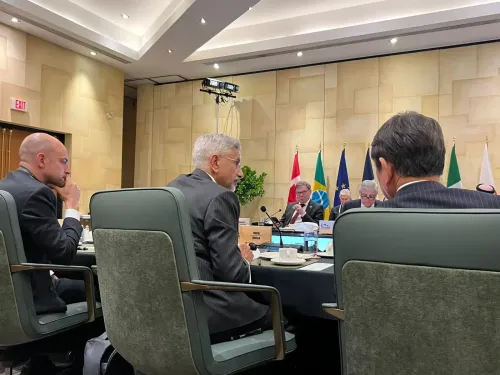How Have GST Reforms Contributed to Record Low CPI Inflation?

Synopsis
Key Takeaways
- Current CPI inflation stands at 0.25%.
- Food inflation has reached a historic low of -5.02%.
- Continuous GST reforms are positively impacting inflation rates.
- Economists predict manageable inflation levels in the upcoming quarters.
- Investment in infrastructure and agriculture is essential for stability.
New Delhi, Nov 12 (NationPress) Economists indicated on Wednesday that the continued decline in CPI inflation for October can be attributed to the government's effective GST reforms, which are positively influencing the economy.
The year-on-year inflation rate, as per the All India Consumer Price Index (CPI) for October, is recorded at 0.25 percent (provisional).
Rajeev Juneja, President of PHDCCI, stated, “The unprecedented low food inflation of the current CPI series, now at -5.02 percent (provisional), is the primary factor driving the lowest headline inflation in this series.”
He emphasized the need for a focus on enhancing infrastructure and logistics, fortifying agricultural supply chains to prevent food price surges, and prioritizing technology-driven gains in productivity across manufacturing and services.
Dr. Ranjeet Mehta, CEO and Secretary General of PHDCCI, conveyed that for the upcoming two quarters, “we foresee India's inflation remaining within a manageable range, supported by ample food supply, stable energy prices, and the Reserve Bank of India's strategic monetary policies.”
Rajani Sinha, Chief Economist at CareEdge Ratings, noted that CPI inflation has consistently trended downward, easing to 0.3 percent in October, aligning with expectations.
“The beneficial effects of GST rationalization and the deflation within the food and beverages sector contributed to the reduced inflation figures. The food basket's deflation intensified to 3.7 percent in October, compared to 1.4 percent the previous month,” Sinha remarked.
Economists predict that food inflation will remain moderate due to robust agricultural performance and a favorable base.
Moreover, sufficient reservoir levels and strong kharif sowing are promising for food price stability.
“Looking ahead, inflation is anticipated to average 0.9 percent in Q3, increasing to 3.1 percent in Q4 FY26. With subdued food inflation, we expect an average inflation rate of 2.1 percent for FY26,” Sinha pointed out.
Aditi Nayar, Chief Economist at ICRA Ltd, mentioned that the RBI MPC is likely to further reduce its CPI inflation forecast for FY2026 from 2.6 percent (as noted in the October 2025 meeting), influenced by the declining sequential trend in food prices and the effects of GST rate adjustments on various CPI basket items.
“This, along with the dovish stance from the October 2025 policy document, could facilitate a 25-bps rate cut in the December 2025 policy review, unless Q2 FY26 GDP growth exceeds expectations,” Nayar added.









